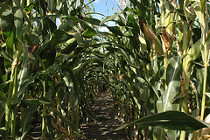Continued eco-packaging development brings the new TIN CAN
Excessive and un-environmental packaging has caused considerable concern for the planet, and businesses are increasingly showing willingness to use alternatives. The new development on the block is a biodegradable can from Taiwan.

 Excessive and un-environmental packaging has caused considerable concern for the planet, and businesses are increasingly showing willingness to use alternatives. The new development on the block is a biodegradable can from Taiwan.
Excessive and un-environmental packaging has caused considerable concern for the planet, and businesses are increasingly showing willingness to use alternatives. The new development on the block is a biodegradable can from Taiwan.
Plant-based, biodegradable, and recyclable materials have been used to develop packaging for various uses. Environmental Packaging includes plates made from sugarcane bagasse and pots made from polylactic-acid (PLA). PLA is formed by extracting lactic acid from corn starch, and can replace petroleum based polymers.
The new container, from Taiwanese design firm Haoshi Studio and manufacturer PLA Studio, is also produced from PLA, and is anticipated to replace aluminium cans. The product, called TIN CAN, was conceptualized to reduce waste and boost recycling.
The US-based Clean Air Council estimates that recycling 1 tonne of aluminum cans saves the equivalent of 36 barrels of oil. Manufacturers of TIN CAN claim that PLA lacks the negative effects of oil-based plastic and is 100 per cent biodegradable. In a compost situation PLA will break down into CO2 and water.
This corn starch derived plastic is used by top UK supermarkets, however it is not used to package all their goods, since it has functional barriers, such as meeting shelf life requirements of long-life food and drinks. This means that food and drinks stored in the TIN CAN would need to be consumed within a restricted time frame.
The time it takes for PLA to decompose depends on variables, such as temperature, the PH level of compost and the concentration level of PLA present, states Robert Weber, Industrial Agricultural Products Center, University of Nebraska-Lincoln.
Weber’s study, Laboratory Composting of Polylactic Acid, also found that composting conditions influence the level of CO2 released. According to World Centric, who claim to aid the move towards sustainable enterprise, PLA takes 180 days or more to biodegrade.
PLA takes less energy to produce than Polyethylene terephthalate (PET) and other plastics, and emits significantly less greenhouse gases, state Wim J Groot and Tobias Boren in a paper in The International Journal of Lifecycle Assessment (August 2010).
The patent-pending TIN CAN can be heated to 43.3 degrees celsius and is fully insulated. Unlike an aluminum can, it has a removable top in addition to a ringpull, making it suitable for multiple uses. The product costs $28 – more than many petroleum-based products – restricting its adoption by corporations and acceptance from consumers.
Clare Goldsberry states in Plastics Today (October 2010), that demand for corn has risen considerably, and more PLA is being manufactured, so its price has increased.
Using corn in PLA manufacture could be seen as unethical in light of food shortages prevailing in many parts of the world.
The application spectrum of PLAs is expanding, and there are opportunities to replace various fossil-based polymers in packaging and a variety of products. This facilitates climate change mitigation and reduces dependence on fossil fuels, while promoting the use of local and renewable resources.
It is evident that in emerging green economies agricultural technologies, and sustainable growing, form a fundamental role in the changeover towards a more sustainable industry and society. Further developments from the agriculture stages to production stages, could help to make the TIN CAN and other PLA products, an even greener, ethical and affordable option.
Image: mattdente | Flickr
